The Right Way to Dry Off a Dairy Goat Before Breeding Season (If You Need To)
Not sure if you should dry off your dairy goat before breeding? Learn when it makes sense, how to do it safely, and why timing matters.
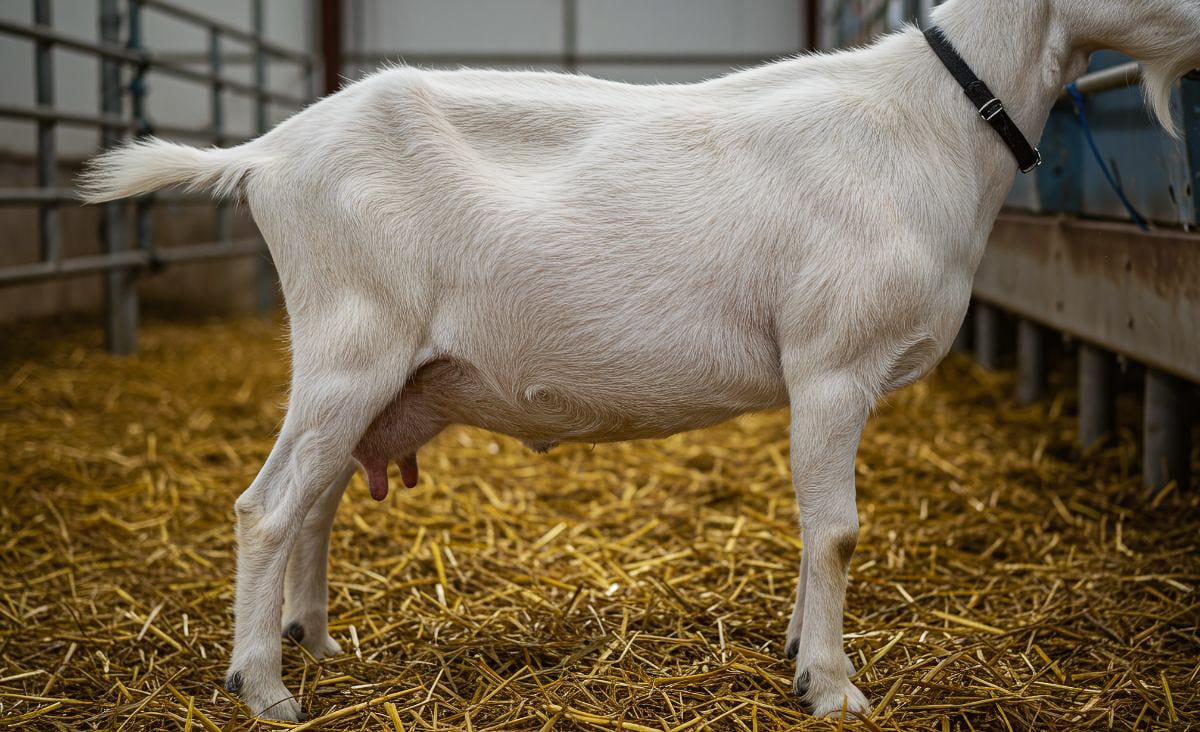
When breeding season rolls around, most of us are busy matchmaking and circling due dates on the calendar. But if you’re still milking your doe, you may be wondering: do I need to dry her off before breeding season starts?
I’ve been there myself. In my early years with dairy goats, I thought drying off was something you did strictly two months before kidding. But as the years went on, I realized there are situations where it makes sense to stop milking earlier, right before breeding. And other times, it just doesn’t make sense.
I’ll walk you through the times it makes sense to stop before breeding, why most folks wait until closer to kidding, and how to dry off a doe without making her miserable or risking mastitis.
Why Drying Off Matters for Dairy Goats
Drying off isn’t just about giving you a break from milking. It’s about giving your doe’s udder tissue time to rest, repair, and prepare for her next lactation. Without a dry period, colostrum might not be as rich, next year’s milk supply could be lower, and her body won’t have the same reserves for pregnancy.
If you’re curious about other udder-related issues, like why a doe might start producing milk before she’s even bred, you’ll want to read my guide on precocious udder in goats: causes, care, and what to expect.
I’ll admit, I used to think “the more milk, the better.” But pushing a doe to milk straight through until kidding left me with a tired animal and weaker kids. Lesson learned.
No matter how you time it, every doe needs a break if you want strong kids and a solid milk supply next season.
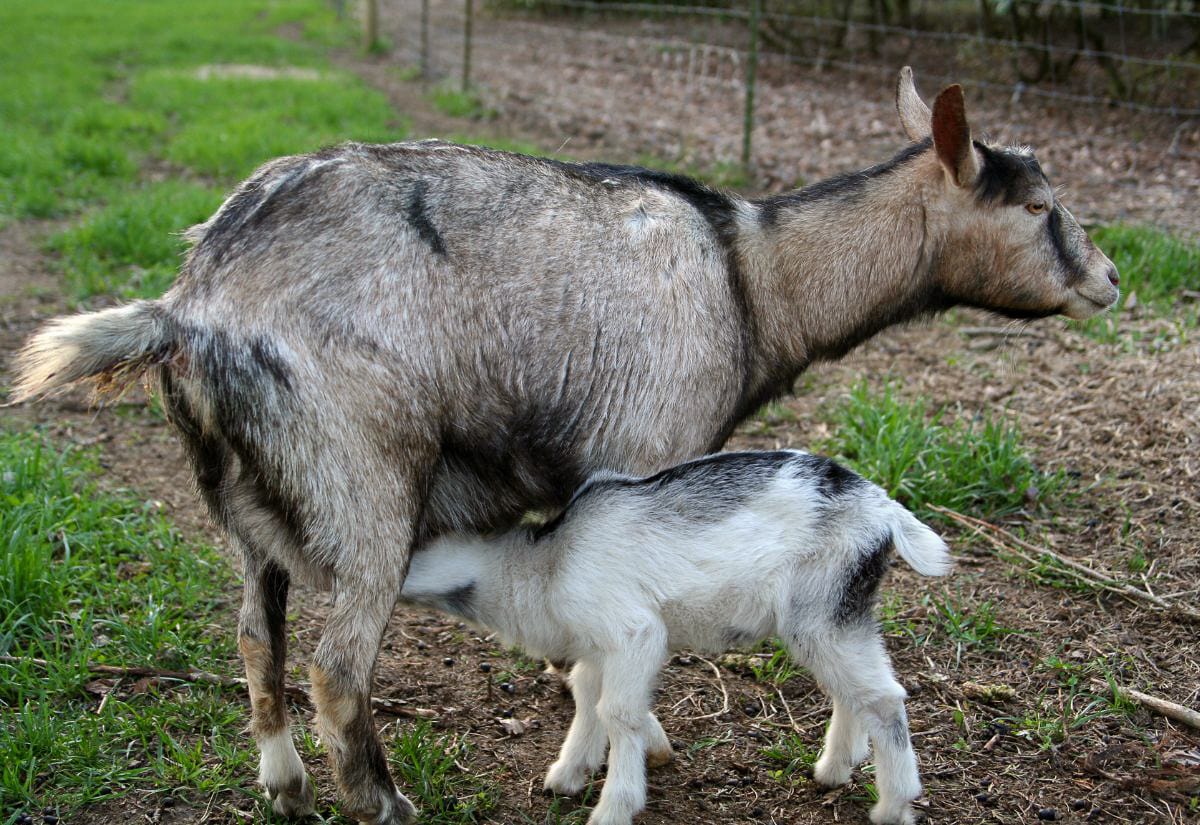
Do You Need to Dry Off Before Breeding Season?
Here’s the thing: you don’t actually have to dry her off before breeding. The standard recommendation is to dry a doe off about 6–8 weeks before kidding.
Here are a few times I’ve found it makes sense to stop milking before breeding:
- She’s already tapering down. If she’s only giving a cup or two a day, stretching milking out another month might not be worth the effort.
- Her body condition is low. Milking takes a lot of energy. Drying her off early helps her gain weight and her energy stores before pregnancy.
- You want an easier schedule. Fall can be busy. Sometimes simplifying your routine is reason enough.
I’ve done both: kept milking after breeding when a doe was still producing well, and stopped early when her output dipped. Both approaches are fine. What really matters is that she stays healthy and gets that break before kidding.
If you’re also mapping out breeding plans (heat cycles, timing, all that) I’ve got a post on what to expect when you’re breeding your dairy goats that’ll help.
When to Dry Off: Breeding vs. Kidding Timelines
This is how I break it down in my own herd:
- Required: Dry off at least 6–8 weeks before kidding.
- Optional: Dry off at or before breeding if her condition or your schedule benefits from it.
Example Timeline
Breeding in October → Kidding in March → Dry off no later than January.
If you choose to stop milking in September (before breeding), that just gives her a longer rest period.
If you’re new to this, aim for the standard 2 months before kidding. Once you’ve got a feel for your does’ bodies and production, you can adjust.
Step-by-Step: How to Dry Off a Dairy Goat
You can dry off a doe two ways: gradually or all at once. Which one works best really depends on how much milk she’s still giving.
Gradual Dry-Off (best for does still producing a lot)
- Stretch intervals: Move from twice-a-day to once-a-day milking.
- Skip days: After a week, go to every other day.
- Stop completely: Once she’s only producing a small amount, stop milking altogether.
Abrupt Dry-Off (for low producers)
If she’s giving less than a cup a day, you can stop milking cold turkey. It feels counterintuitive, but continuing to empty the udder just tells her body to keep producing.
Diet Adjustments
Dial back the rich stuff a little. You’re not starving her, you’re just slowing down the things that keep her body cranking out milk. For most does, this means:
- Switching from alfalfa to a good quality grass hay during the dry-off period.
- Reducing or removing grain from her ration unless she needs it to hold body condition.
- Keep the minerals. Don’t cut those, since she’ll need them heading into breeding and pregnancy. A good loose mineral mix is a simple thing that makes a big difference for their health.
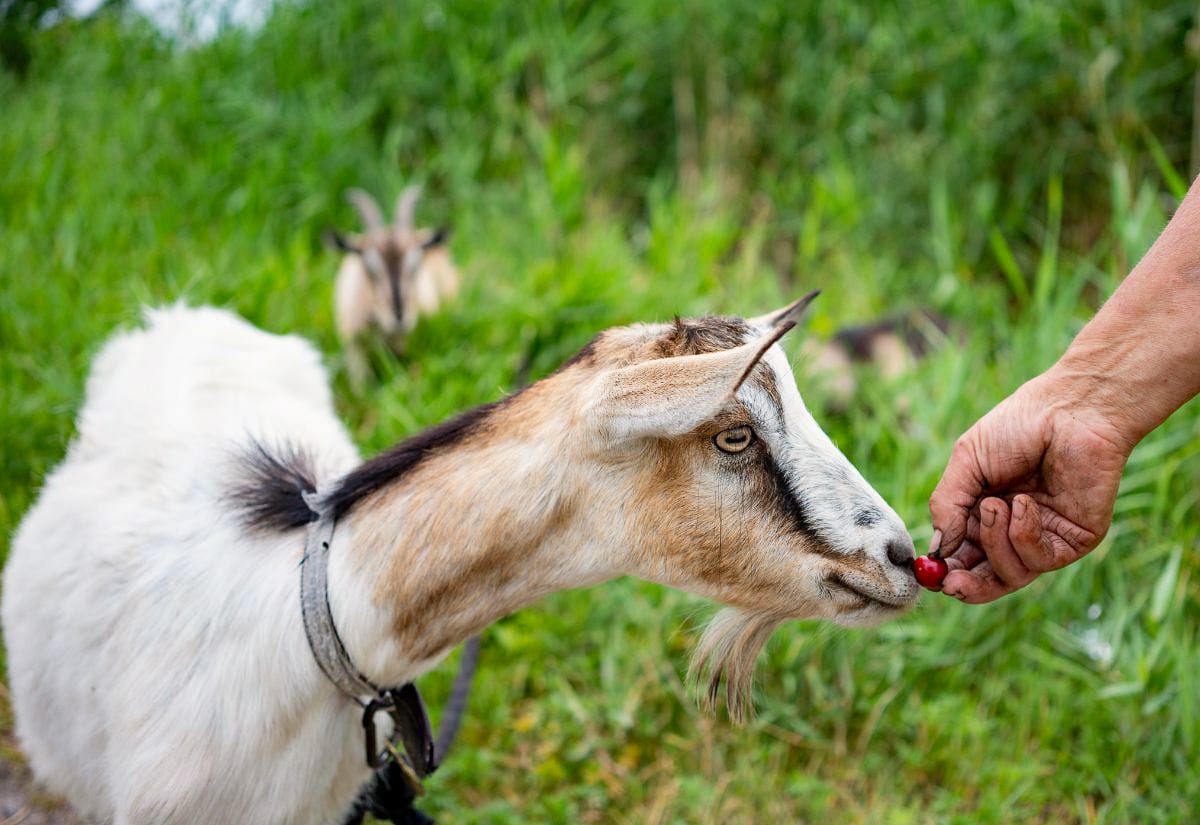
Monitor Closely
Check her udder daily for the first week after drying off. It should soften gradually. Any heat, hardness, or foul smell? That’s a red flag for mastitis. If you suspect mastitis, don’t wait it out. Contact your vet right away. In the meantime, keep her bedding extra clean, reduce stress, and avoid milking her out unless your vet advises it, since incomplete or frequent milking can make things worse.
One thing that’s helped me keep udders healthy during dry-off is a homemade teat wash. It’s gentle, effective, and you can mix it up in minutes.
Commit
Once you’ve decided to dry her off, you’ve got to commit. It’s tempting to go out and “just relieve the pressure” when her udder feels full, but even pulling a little milk tells her body, keep making more.
I learned this the hard way with one of my best milkers. I thought I was doing her a favor by taking off just enough to make her comfortable. Instead, I basically trained her body to hang on to milk for weeks. It was a headache for me and rough on her udder. Her udder never got the signal to stop, and that actually made mastitis more likely. It wasn’t being milked out, but it also wasn’t resting.
Stick to the plan and let her body figure it out. It will.
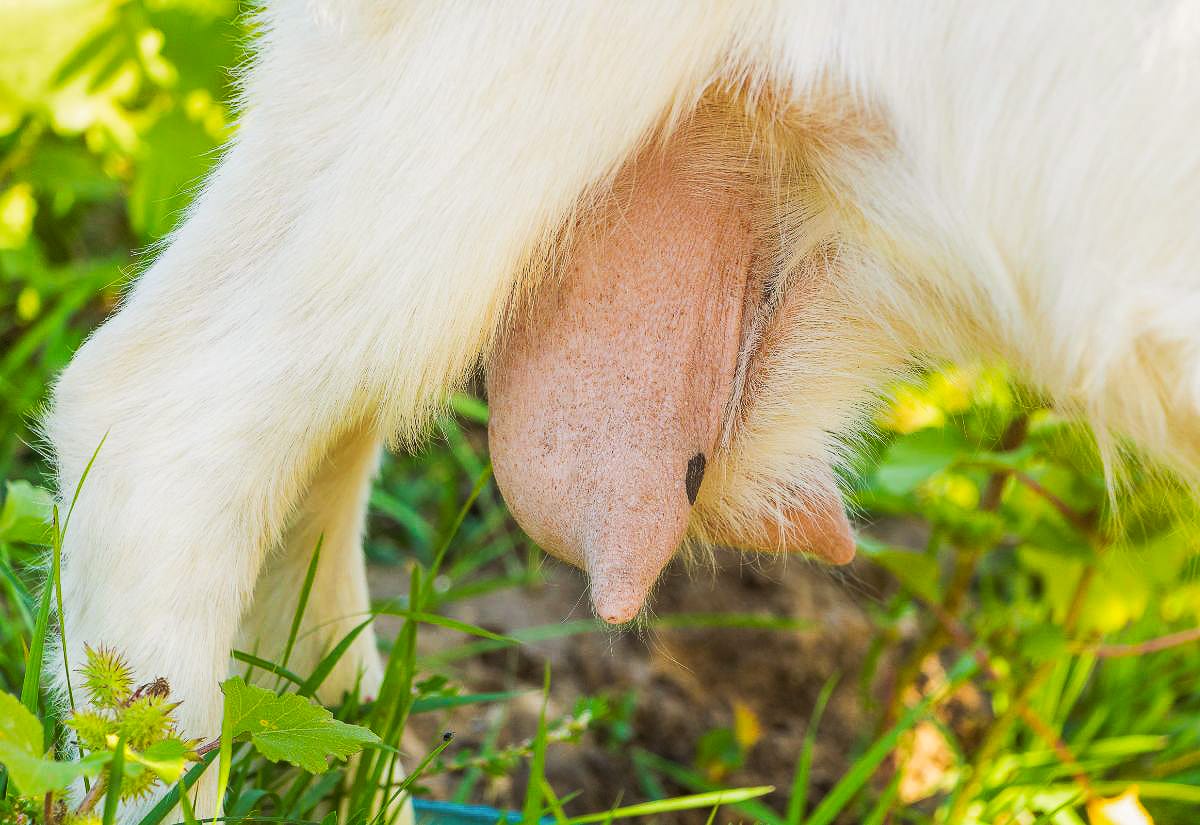
Troubleshooting Common Problems
Engorgement: Apply cold compresses and stick with your schedule. Resist the urge to fully milk out. A bag of frozen peas or corn wrapped in a towel works in a pinch, but honestly, a reusable gel cold pack lasts longer and molds better around the udder.
Leaking: Normal at first. It usually stops within a week. Keep bedding clean to reduce infection risk.
Worried about mastitis? If you see clumps, blood, or a bad smell, call your vet right away. Catching it early makes the whole process a lot easier on both you and your doe.
Doe loses weight: Add extra hay or moderate grain. The goal is a healthy body condition going into pregnancy.
Still Wondering About Drying Off?
Here are some common questions I hear from new goat owners:
Want to remember this before next breeding season? Pin this guide so you’ll have it handy when it’s time to dry off your doe.
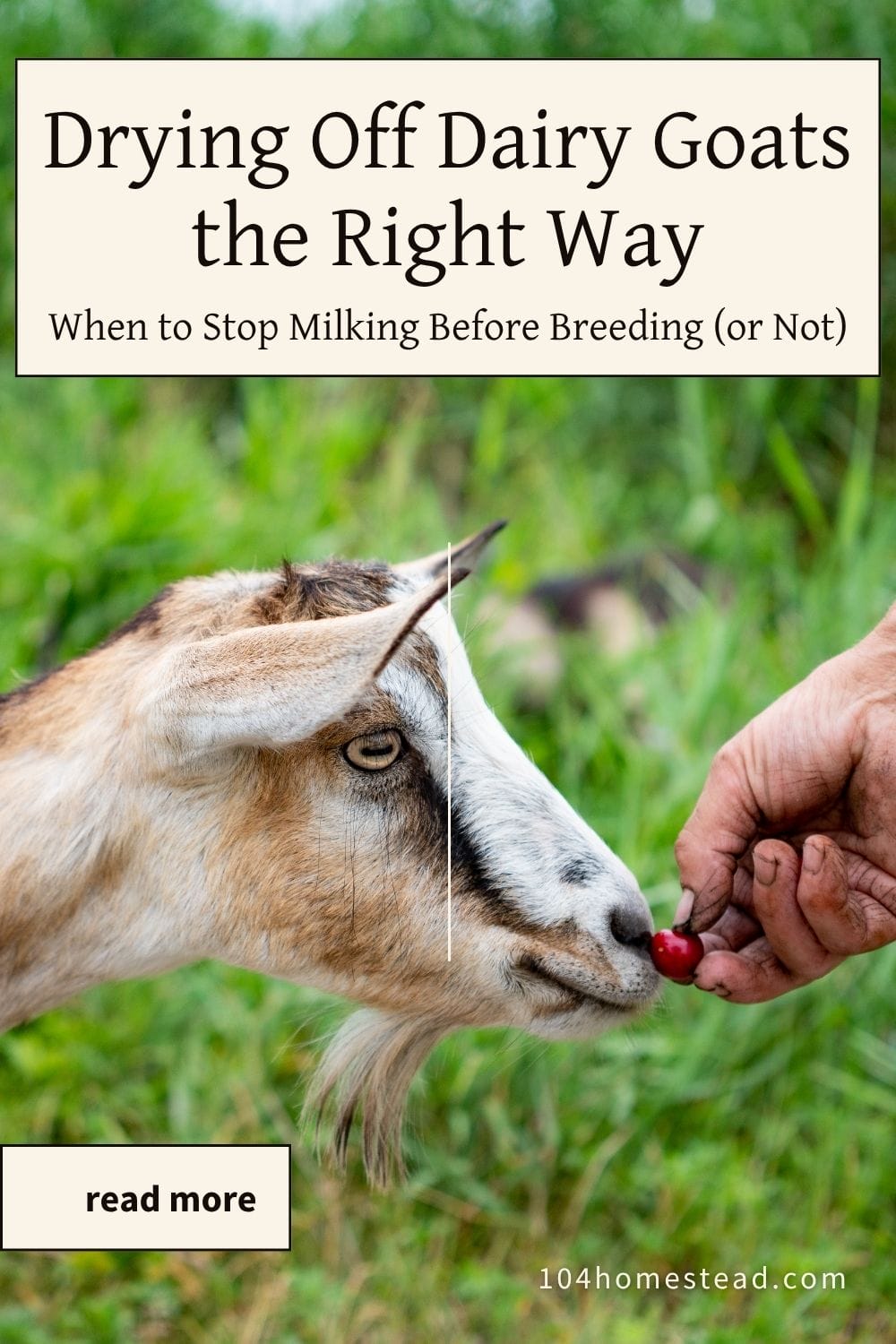
Drying off a doe isn’t about following a perfect calendar date. It’s about paying attention to her body and giving her the break she needs. While you don’t have to dry her off before breeding season, sometimes it’s the right call, especially if she’s low on reserves or barely producing.
Whether you stop before breeding or closer to kidding, the goal’s the same: let her udder rest, keep her in good shape, and set her up for healthy kids.
If you’ve tried both approaches, I’d love to hear how you time your dry-offs.
